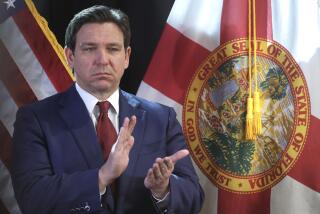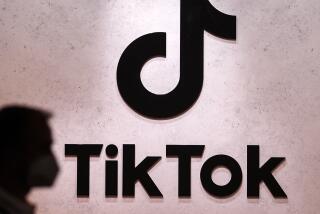House Passes Ad Limits for Children’s TV
- Share via
WASHINGTON — Legislation to limit commercials on children’s shows to 10 1/2 minutes an hour on weekends and 12 minutes on weekdays won final congressional approval Monday as the House voted to restore some of the rules wiped away by deregulation of the broadcast industry.
The bill, approved by voice vote, would require that broadcasters’ efforts to offer educational and informative children’s TV programming be evaluated by the Federal Communications Commission as a part of the periodic license renewal process.
It also establishes a National Endowment for Children’s Educational Television programming, with an authorization of $2 million in 1991 and $4 million in 1992.
Identical legislation was passed earlier by the Senate and the bill is being sent to the White House. President Bush is “strongly opposed” to the limits on advertising for fear of violating broadcasters’ First Amendment rights, an Administration official said. But “being strongly opposed isn’t the same thing as a veto threat,” the official added, noting that a veto is doubtful.
Meanwhile, in a separate voice vote, the House gave final approval to a bill requiring built-in closed captioning decoders for the hearing impaired on all new TV sets with screens of 13 inches or more.
The legislation, if signed by the President, would go into effect July 1, 1993. It is expected to add between $5 and $15 to the price of a television set. The bill also calls on the FCC to establish standards for captions to be incorporated into emerging TV technology, such as high definition televisions.
The Administration has issued no opinion on the bill to require television sets to include closed-caption equipment, the officials said.
A broad coalition of supporters of limits on advertising during children’s shows, including child advocacy groups, national education associations and television industry executives--predicted that the President would sign the bill. They said that Bush, who has proclaimed himself the “education President,” would find it difficult to veto a bill requiring broadcasters to do their part in teaching children.
New and creative shows are likely to be developed by programmers because the legislation would require the FCC to consider, as a part of the broadcast license renewal process, whether a station’s “overall programming” provides educational and informative shows for children, they said.
“This bill ensures there is not exploitation of children’s programming,” said Rep. Edward J. Markey (D-Mass.), a key sponsor of the measure. “Each and every TV station in the United States will have to demonstrate (that) it is serving the educational and instructional needs of children.”
The National Assn. of Broadcasters, which in the past has opposed legislation to set curbs on advertising during children’s shows, joined its critics this time to support the bill. “We’re pleased with the outcome,” a NAB spokesman said. “It’s been a contentious issue, and we’re glad to see it resolved.”
Since 1984, when the FCC abolished guidelines limiting commercials on children’s shows to 9 1/2 minutes per hour on weekends and 12 minutes on weekdays, programmers have expanded the commercial time. According to a 1988 survey by the NAB, about one in five of the programs directed to children averaged more than 12 minutes of commercials per hour.
President Ronald Reagan pocket-vetoed nearly identical legislation in 1988 after it cleared both congressional chambers.
Sue Edelman, executive director at Action for Children’s Television, said that the bill will make it easier for programmers to broadcast more creative shows and curtail toy manufacturers from dominating the Saturday morning airways when children are most likely to be watching television.
“It’s difficult for people to get a program on television for children that doesn’t have a toy tie-in,” she said. “There’s not the money for it now. Programs are produced out of (toy companies’) advertising budgets, and not out of (programmers’) creative budgets.”
More to Read
Get the L.A. Times Politics newsletter
Deeply reported insights into legislation, politics and policy from Sacramento, Washington and beyond. In your inbox twice per week.
You may occasionally receive promotional content from the Los Angeles Times.










